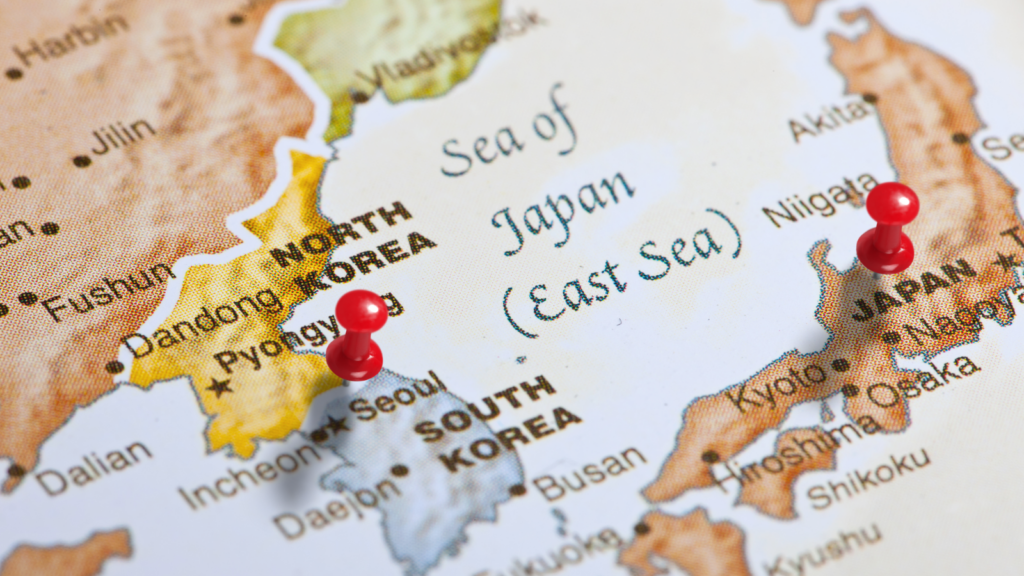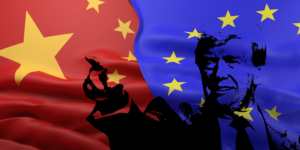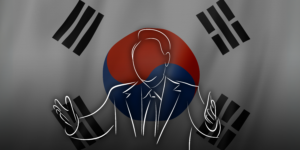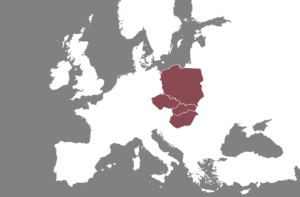From afar, Japan is often perceived as a homogenous nation with little ethnic diversity. This perception is further perpetuated and endorsed by the Japanese government. However, throughout history, Japan has been home to various ethnic groups, including the Ryūkyūan and Ainu. According to the 2020 census conducted by the Statistics Bureau of Japan, the population comprises 97.8% Japanese and 2.2% foreigners. However, the census categorizes individuals based on citizenship rather than ethnicity. Consequently, individuals of mixed heritage or naturalized citizens are still recorded as Japanese. This tendency is further emphasized among ethnic minorities such as the Ainu, who may decide to conceal their heritage, even from their children, due to past discrimination.
For a clearer understanding of Japan’s demographics, it is essential to discuss the country’s indigenous ethnic minorities: the Ainu, numbering approximately 13,118 (as of 2017), and the Ryūkyūan, with a population of around 1,400,000 (2019). The Ainu are the indigenous inhabitants of the northern island of Hokkaidō. They are distinguished from ethnic Japanese by genetic heritage and language, which is isolated and unrelated to Japanese. Historically, Japanese society looked down on the Ainu, often mocking them for their appearance, such as their apparent hairiness. Additionally, the Ainu possess unique folklore and traditions. They were officially acknowledged as an ethnic minority in 1991 but only recognized as an indigenous group in 2019. Ryūkyūan (or “Okinawans”, from the name of the most populated island) are an indigenous group inhabiting the Ryūkyū archipelago located in the south of Japan. Historically, the Ryūkyū Kingdom maintained significant independence while entertaining tributary ties to China. Its formal annexation by Japan occurred took place in 1879. Although the Ryūkyūan language is not mutually intelligible with Japanese, it is thought to belong to the same language family, unlike Ainu. A non-ethnic minority is the Burakumin, numbering around 1.2 million as of 2020. Despite being ethnically Japanese, the Burakumin have faced discrimination for millennia due to their ancestry, tracing back to individuals engaged in stigmatised occupations, such as butchers, during the feudal era. The reported figures may not precisely reflect the actual situation, given the historical oppression of these minorities, who may choose to hide their origins to avoid further discrimination.
In addition to existing minorities, the number of foreign residents in Japan in 2022 reached a record high of 3,075,213. The largest foreign population consists primarily of Chinese, closely followed by Koreans. The Japanese government even made efforts to attract Nikkei Brazilians, the descendants of Japanese emigrants, who reached a population of around 211,178 in 2020. Despite this recent increase in migration, the prevailing perception remains that of a mono-ethnic country with limited migration and challenges in assimilating foreigners. According to Siddle, around 4-6% of the Japanese population are ethnic minorities who “suffer considerable discrimination”. Even the first significant non-indigenous ethnic minority, the Zainichi Koreans, still face difficulties integrating into Japanese society despite their long history in the country. In this article, I delve deeper into the identity of Zainichi Koreans, how they are perceived as non-Japanese in Japanese society, their struggle for rights, and their current situation.
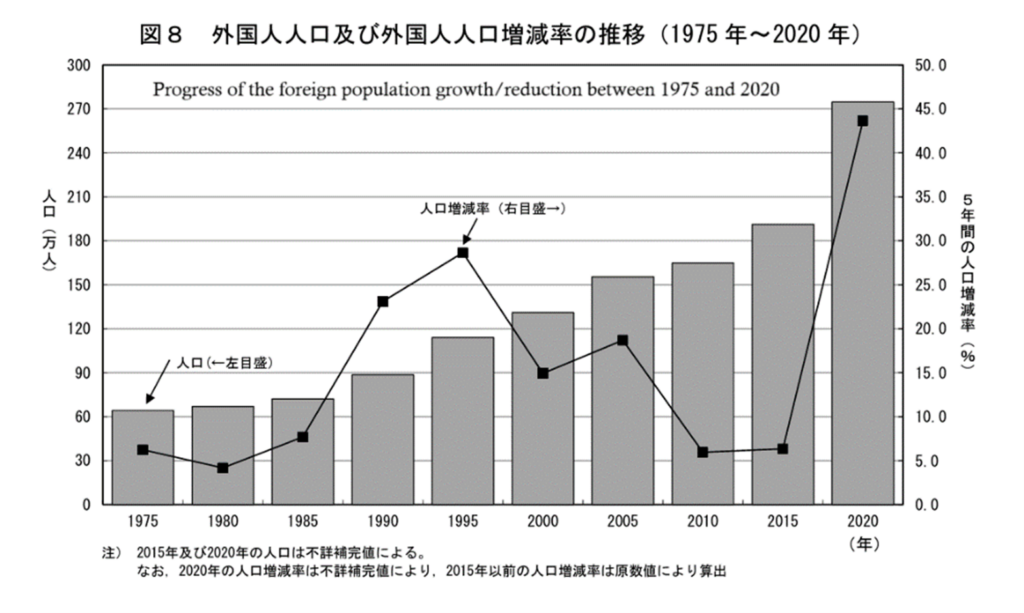
Terminology
In discussing Zainichi, it is crucial to address them appropriately. “Zainichi” here refers to the descendants of the Korean diaspora that migrated to Japan before and during the war era, distinct from the more recent Korean migrants who arrived in Japan following the war. The term Zainichi (在日) in Japanese means “staying in Japan” and carries a somewhat negative connotation, emphasizing their temporary residency and lack of full Japanese citizenship. The official Japanese term is “Zainichi Kankoku Chōsenjin” (在日韓国朝鮮人), while “Zainichi Chōsenjin” (在日朝鮮人) refers to those affiliated with North Korea, and “Zainichi Kankokujin” (在日韓国人) to those affiliated with South Korea. The most neutral term is “Zainichi Korian” (在日コリアン), as the word “Korian” has no affiliation with either South/North or a historical connotation. The word serves as a constant reminder that they are not ethnic Japanese, reinforcing a binary distinction between Japanese and non-Japanese.
Zainichi Koreans’ Origins
The story of Zainichi Koreans begins after Japan occupied the Korean peninsula in 1910. The influx of Korean migrants started in the 1920s when Japan was experiencing a labor shortage. These migrants were mostly poor peasants from southern Korea who were forcibly brought to Japan. Korean farmers were compelled to migrate because Japanese land surveys were taking their land away from them. They primarily found employment in the mining and construction fields. Between 1920 and 1930, the number of Koreans living in Japan significantly increased, reaching 419,000. It grew to 2 million by 1945. Their wages were lower than ethnic Japanese, and they lived in ghettos with other minorities, such as Ryūkyūan and Burakumin.
Discourses about creating an alliance within the geographical and cultural boundaries of East Asian nations (Pan-Asianism) influenced the development of legislation in the Japanese Empire. There were two main theories: the mixed nation theory (混合民族論), which posited that Japan was a mix of different people, and the homogenous theory (単一民族論), which posited that Japan was a homogenous country whose people share the same origins and a common culture. The former became more accepted and widespread in the Japanese Empire as a tool to justify their colonial conquests. In 1925, as part of an assimilation effort, Koreans were granted limited citizenship, gaining universal male suffrage and the possibility to stand as candidates for local and national elections. In 1939, around 990,000 Koreans, now Japanese subjects, were conscripted for the war effort to increase the number of soldiers, and at least 80,000 Korean women were coerced into wartime prostitution, the so-called “comfort women” (従軍慰安婦).
Gradual Loss of Rights
With the end of World War II, Koreans who had migrated to Japan rapidly lost their citizenship and all of their privileges as a result of Japan releasing its colonies. About 1.4 million Koreans living in Japan decided to return to their country, but about 600,000 remained. The mixed nations theory, no longer useful for political purposes, was discarded and Japan based its identity on being an ethnically homogenous country. In December 1945, Koreans’ voting rights were revoked with the amendment to the Election Law and in 1947, the Japanese government adopted the Alien Registration Law, declaring anyone without a Japanese family registry (戸籍) a foreigner. In 1950, the Japanese government further regulated Japanese nationality with a strict naturalization process by promulgating the Patrilinear Nationality Law (国籍法). In short, this law established nationality based on the bloodline (jus sanguinis) and not on the birthplace (jus soli), and only from the father’s side. Furthermore, in 1952, with the San Francisco Peace Treaty, ethnic Koreans in Japan were officially deprived of their Japanese nationality.
The San Francisco Treaty resulted from the US’ political influence on Japan. From the end of the Second World War until 1952, Japan was under Allied occupation, with General Douglass MacArthur serving as the Supreme Commander for the Allied Powers (SCAP) and overseeing the governance of Japan. Both the Allied forces and Japanese authorities sought to uphold public order and control over the population and viewed communism as a destabilizing force. Consequently, due to their association with communism, Koreans were often stigmatized. Allied authorities regarded Koreans as criminals, with SCAP Chief of Labor Education Richard Deverall describing Koreans in Japan as “a bunch of black marketers“. Any issues involving Koreans were consistently blamed on their alleged connections with communism. These accusations were not baseless, as there were, indeed, Zainichi Koreans with leftist leanings and affiliations with the Japanese Communist Party. Some of them engaged in actions that undermined Japan’s collaboration efforts with the US during the Korean War. Because of this, the Occupation authorities collaborated with the Japanese government in peddling exclusionary measures against Zainichi Koreans. In 1949, SCAP devised two proposals for the “elimination of the Korean problem in Japan”: repatriation (more like deportation) and assimilation. The 1952 San Francisco Treaty, besides ending the Allied occupation of Japan, was also a chance the US gave Japan to exclude Zainichi Koreans, as SCAP did not mention any nationality rights for former Imperial subjects in the agreement.
Zainichi Koreans’ Fragmentation
As a result of these changes, the Zainichi’s struggle for rights in the post-war period was largely influenced by the Japanese government’s efforts to exclude them, which led many Zainichi Koreans to perceive themselves as temporary residents. These two factors determined the first phase of the Zainichi struggle, which focused mostly on their rights as non-Japanese and outsiders. The early generations did not yet identify as Japanese: [..] “the immediate post-war struggle through to the 1970s still focused on the Zainichi population as Korean and separate from Japanese society”. Chung explains that, due to the Japanese citizenship policies, Zainichi Koreans came to equate their ethnic identity to nationality. This led to the creation of two different organizations that addressed Zainichi affairs: the South Korea-affiliated Mindan (在日本大韓民国民団) and the North Korea-affiliated Chongryun (朝鮮総連). Since the original objectives of these two organizations were to preserve Korean nationality, they pushed their members to repatriate and prevented them from acquiring Japanese nationality. Chongryun and Mindan played an active role in perpetuating the status of Koreans as foreigners since their very existence relied on their members retaining a foreigner status. Furthermore, far from collaborating to improve the livelihood of Zainichi Koreans, they disagreed on crucial issues like residency rights for Koreans.
Gradual Improvements
The first indications of progress for Zainichi Koreans began in 1965 with the signing of the South Korea-Japan Diplomatic Normalization Treaty. South Korea was officially recognized, and diplomatic relations with Japan were initiated. Furthermore, with this treaty came the Agreement on the Legal Status and Treatment of the Koreans in Japan, which allowed Koreans who chose to be classified as South Koreans to obtain permanent residence. Nevertheless, around 250,000 Koreans, mostly those who identified with North Korea, refused to apply and remained stateless. The treaty gave South Korea-affiliated Zainichi some residency rights. However, while the government did not grant them Japanese citizenship, it established a new category: special permanent residency (特別永住権).
The 1970s witnessed a change in Zainichi activism, shifting from an emphasis on ethnic identity to advocating for rights as Japanese citizens. There was also an increase in Japan-born Zainichi Koreans, from 49.9% in 1950 to 74.6% in 1974. Demographic changes, coupled with the realization that Korea’s reunification was now impossible, prompted Zainichi Koreans to perceive Japan as their homeland. Two significant events in the 1970s served as catalysts to compel Zainichi Koreans to engage in protests and advocate for their rights: the Hitachi case and the fingerprinting protests. The Hitachi employment discrimination case (日立就職差別裁判) involved a Zainichi Korean, Pak Chong-sok, whose job offer was withheld by Hitachi after finding out he was not “officially” Japanese, as he only possessed Korean nationality. He sued Hitachi and, in 1974, he won on all charges, with Hitachi publicly acknowledging racial prejudice in its recruitment practices. According to Chapman, it was the Hitachi case that made Zainichi Korean youth aware that they had to pursue rights as members of Japanese society. Another important event that impacted the Zainichi Korean community was the practice of fingerprinting registration. In 1955, the Japanese government imposed a law that forced all registered aliens to be fingerprinted (指紋押捺). The fingerprinting practice was defined by many Zainichi as “a degrading and dispiriting experience” because fingerprint registration was often viewed as synonymous with criminal activity. The requirement for fingerprint registration became the focal point of a resistance movement spearheaded by Zainichi Koreans, who sought its abolition during the 1980s.
In addition to the grassroots action that arose from the Zainichi community, external pressure also supported them. Widespread reforms were initiated in the late 1970s and early 1980s, which coincided with Japan’s ratification of International Covenants on Human Rights. Japan ratified the International Covenant on Economic, Social and Cultural Rights (ICESCR) and the International Covenant on Civil and Political Rights (ICCPR), which, in accordance with international human rights standards for minorities, foreigners, and refugees, granted non-nationals equal treatment and citizenship rights. According to Chung, these groundbreaking reforms would not have happened without external pressure from the UN and the international community. Following ratification, Zainichi Koreans were granted access to welfare programs, like health insurance, pension, old-age welfare pension, child-rearing allowance, and public housing. In 1985, the Patrilinear Descent of Citizenship Law was repealed and, in 1987, it became possible to retain one’s ethnic name as a Japanese national. Furthermore, in 1991, the Japanese government enacted The Special Law on the Immigration Control of Those Who Have Lost Japanese Nationality on the Basis of the Peace Treaty with Japan and Others, which granted the legal status of special residents to those Koreans (and their descendants) who refused to register as South Koreans and identified as North Koreans in the 1960s. As a result of these changes, Zainichi Koreans in Japan improved their socioeconomic circumstances as they now enjoyed greater rights and worked in better occupations. Not to forget the recent popularization of Korean pop culture (韓流 Korean wave) that has further aided Zainichi Koreans in cleaning their images in the eyes of the Japanese.
Current Discriminatory Practices
Nonetheless, despite significant progress, discriminatory practices persist in Japanese society. Naturalization remains the primary means of acquiring full citizenship rights, but the process is complex and discourages many. Nowadays, most Zainichi Koreans are descendants of the forced labourers in the 1920s, so they were born and raised in Japan and speak only Japanese, but they are not eligible for citizenship unless one of their parents is Japanese. Furthermore, as it is against the law in Japan to have two nationalities, for Zainichi Koreans to naturalize would require them to renounce their Korean identity entirely. As Chung put it, “Japanese nationality is closely associated with ethnocultural identity, naturalization applicants must not only renounce their allegiance to their country of origin but must also demonstrate evidence of cultural assimilation”. Moreover, if their ethnic roots were revealed, they would still be seen as outsiders in Japanese society, therefore naturalizing would not even address the underlying causes of prejudice.
Even though there is no fee to pay for naturalization, applicants frequently have to pay hefty attorney costs to prepare the numerous documents needed to authenticate their family histories. This is a significant issue that is thought to deter Zainichi Koreans from applying. If they decide to do it alone, the document preparation can take months or even years. As their ancestors are not from Japan, Zainichi Koreans must obtain family registration paperwork from Korea’s local hometown offices, which prolongs and complicates the process even more. Applicants have also complained about the lack of privacy that the naturalization process entails and lamented that it is stressful and humiliating. Due to these reasons, not many Zainichi decide to naturalize.
Zainichi Koreans are still prohibited from holding government positions and, thus, from exerting significant influence in public decision-making. They have the opportunity to pursue careers as public employees in local governments, but local authorities can impose limitations on the number of foreigners that can be hired. Positions like firefighters, judicial commissioners, civil rights commissioners, and others are not open for foreign nationals, including Zainichi Koreans, even though these positions do not involve any exercise of public power. Additionally, Zainichi Koreans who have not naturalized are not eligible to vote in national elections. It is common practice that only citizens vote in national elections, but the case of Zainichi Koreans is special. The issue lies in the fact that, despite most Zainichi Koreans living in Japan for generations, they still face many obstacles in acquiring citizenship, consequently depriving them of the right to vote at the national level. As a result, they become invisible and unable to influence the politics of the country they have lived from birth.
A survey by the Korean Scholarship Foundation, comprising approximately 1,030 individuals, indicated prevalent discrimination in Japan. Around 30.9% reported experiencing verbal harassment due to their Zainichi Korean identity. Another study by Kim, interviewing 26 Koreans in Japan, highlighted ongoing exclusionary practices in daily life. Most Zainichi Koreans have lived in Japan their entire lives, went to Japanese schools, and only speak Japanese; they are more Japanese than Korean and do not look much different from an ordinary Japanese person. According to Chung, the Korean community in Japan is not interested in “maintaining a strong Korean sociocultural identity”. Only their ethnic name allows people to recognize them as Zainichi Korean. Zainichi Koreans have two names: honmyō (本名), the real name, and tsūmei (通名), the Japanese alias. Zainichi Koreans tend to use tsūmei in everyday life to avoid being discriminated against. According to Kim’s interviews, many Zainichi Koreans said that after revealing their ethnic background, they felt that their friends’ attitudes towards them changed. Furthermore, on the Japanese internet, Zainichi Koreans frequently encounter hate speech. The far-right group Zaitokukai, known for its racist street protests, has extended its activities to the online sphere since the 2000s. This rise in xenophobic rhetoric online has translated into offline violence against individuals of Korean and Chinese descent.
Conclusion
Zainichi Koreans’ struggle for equality has received less attention than in other cases. However, this does not diminish their experiences and efforts to achieve equality. Poor Korean peasants were forced to flee their homeland and travel to the colonial motherland to work the most demanding and underpaid jobs. Following the collapse of the empire, they found themselves in an entirely unfamiliar nation that revoked all their rights.
The journey of Zainichi Koreans started from the first generation who fought to maintain their ethnic roots to those born in Japan and realized they had to fight for their rights as citizens of the country. Their determination, combined with the pressure from the international community, played a pivotal role in securing achievements in terms of political representation. Despite this, there is still a great deal of informal and societal discrimination against Zainichi in Japanese society, as evidenced by frequent hate speech and exclusionary practices. As Chung stated: “Japan is the only advanced industrial democracy with a fourth-generation immigrant problem”. While other countries struggle to incorporate postwar immigrants, Japan continues to grapple with its failure to integrate prewar immigrants and their descendants.
This work has received funding from the European Union’s Horizon Europe coordination and support action 101079069 — EUVIP — HORIZON-WIDERA-2021-ACCESS-03.
Funded by the European Union. Views and opinions expressed are however those of the author(s) only and do not necessarily reflect those of the European Union or the European Research Executive Agency (REA) . Neither the European Union nor the granting authority can be held responsible for them.

